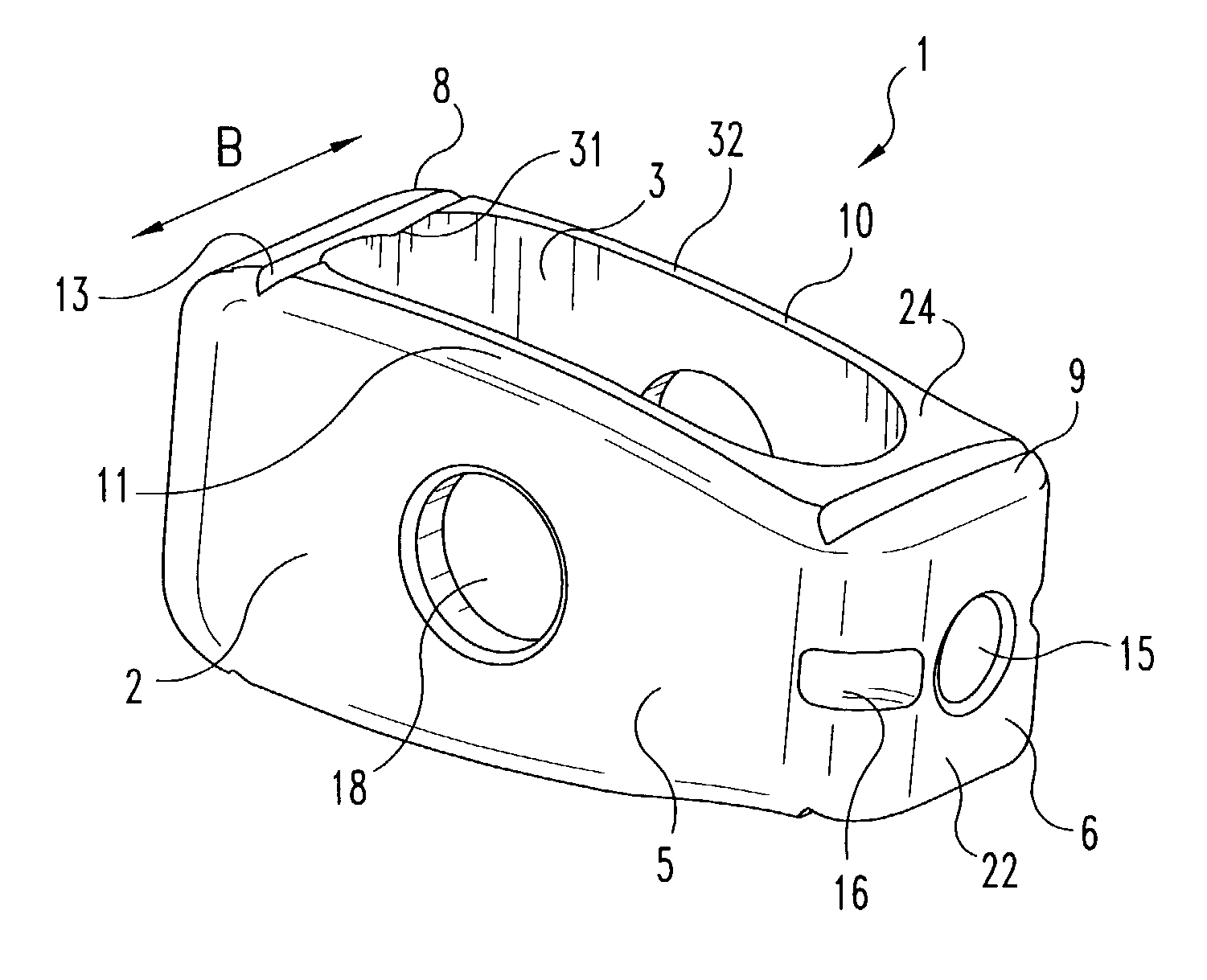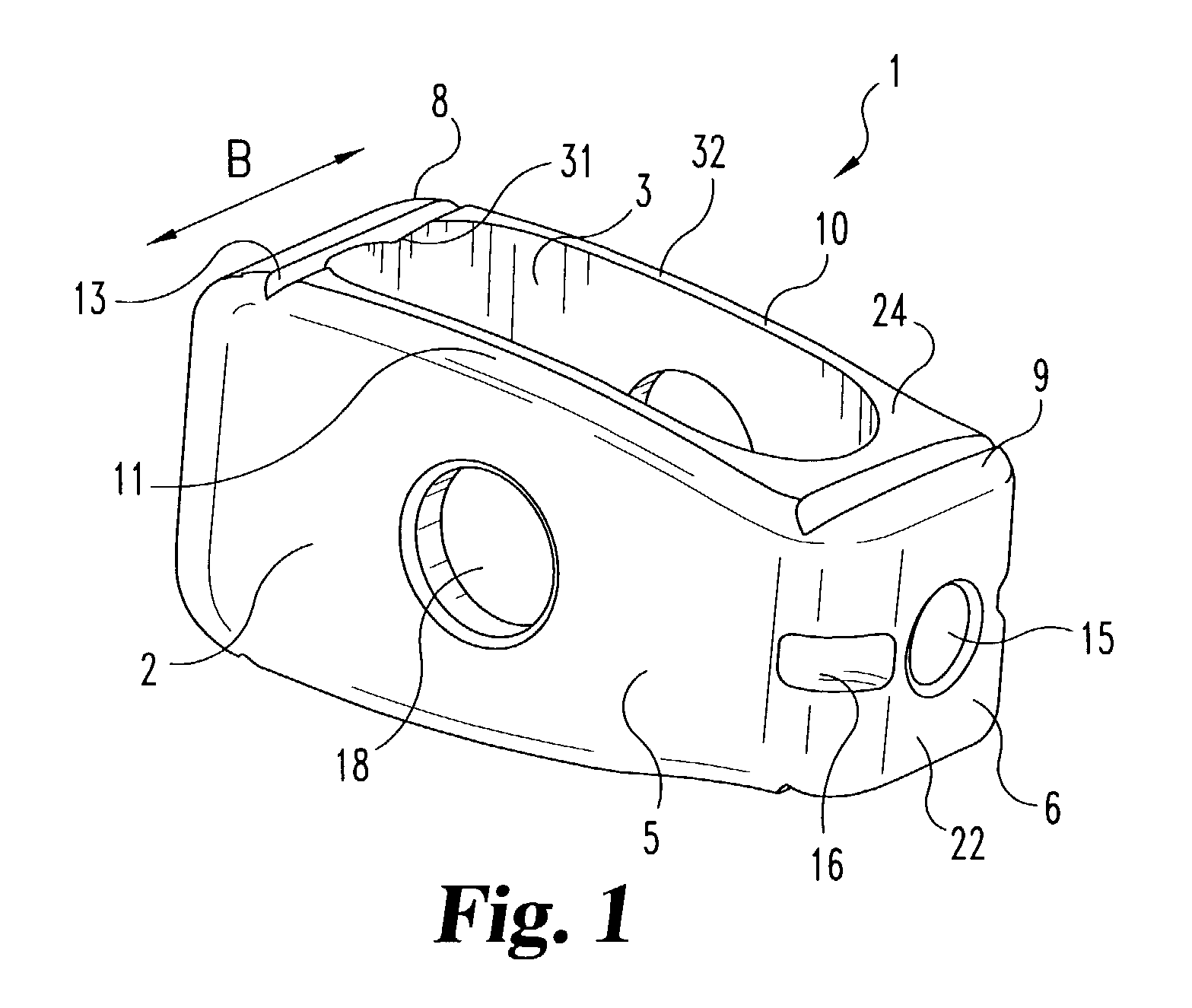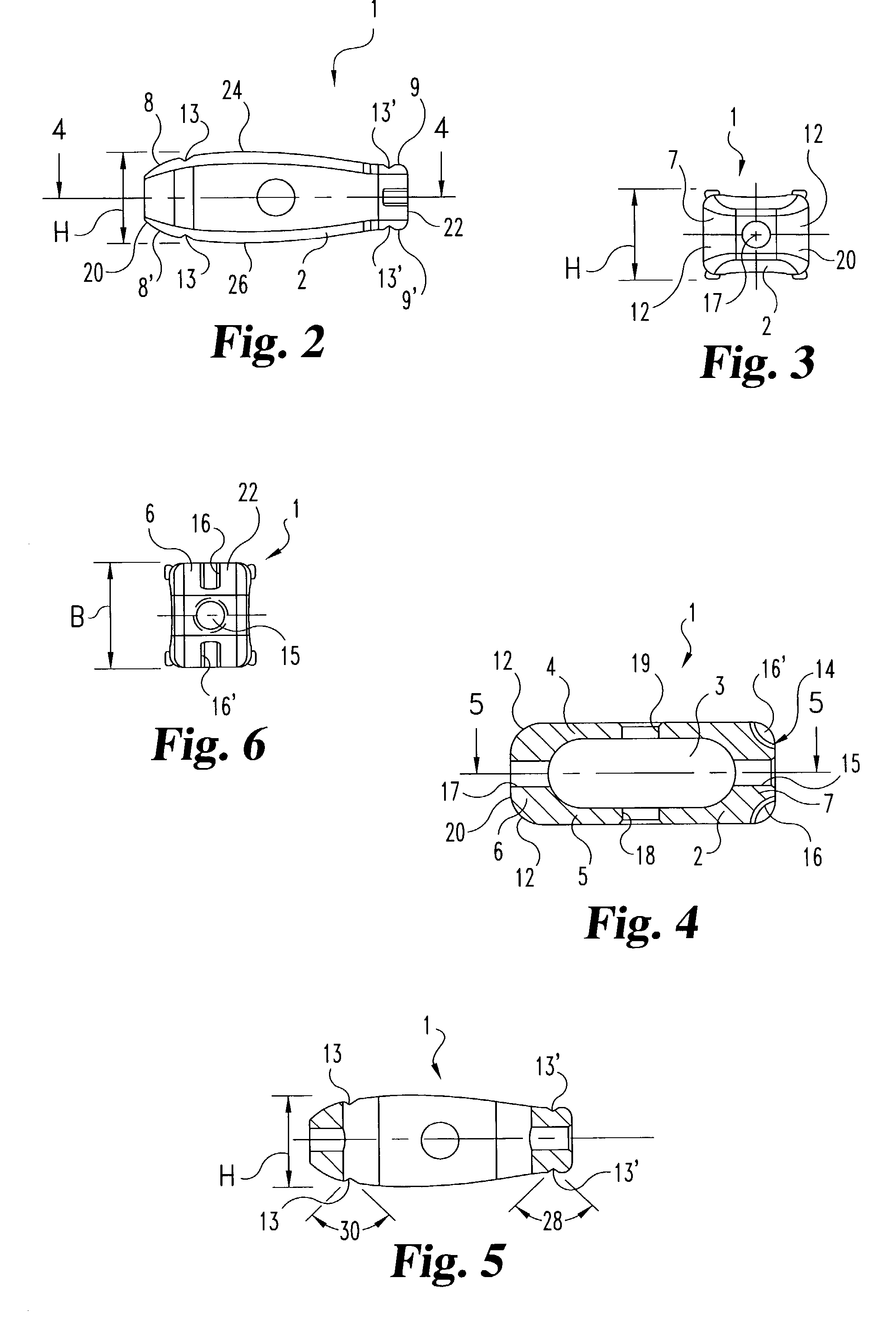Vertebral implant for promoting arthrodesis of the spine
a technology of vertebral implants and arthrodesis, which is applied in the field of intervertebral implants, can solve the problems of inability to maintain the desired disc space, inconvenient manipulation of hand tools, and inability to strengthen and integrity of the endplate, and achieves the effects of enhancing access to the implant cavity, preventing sliding of hand tools, and being easily manipulated
- Summary
- Abstract
- Description
- Claims
- Application Information
AI Technical Summary
Benefits of technology
Problems solved by technology
Method used
Image
Examples
Embodiment Construction
[0073]For the purposes of promoting an understanding of the principles of the invention, reference will now be made to the embodiments illustrated herein and specific language will be used to describe the same. It will nevertheless be understood that no limitation of the scope of the invention is thereby intended. Any alterations and further modifications in the described processes, systems or devices, and any further applications of the principles of the invention as described herein, are contemplated as would normally occur to one skilled in the art to which the invention relates.
[0074]FIGS. 1–5 illustrate intervertebral implant 1 according to the present invention. Implant 1 is formed by an elongated basis body 2 defining a longitudinal axis. Cavity 3 is formed in body 2. Cavity 3 is surrounded by two longitudinal walls 4, 5 and two endwalls 6, 7 (rear wall 6 and a front wall 7). Cavity 3 is formed to extend through in the height direction H of the body 2 and is provided to have ...
PUM
 Login to View More
Login to View More Abstract
Description
Claims
Application Information
 Login to View More
Login to View More - R&D
- Intellectual Property
- Life Sciences
- Materials
- Tech Scout
- Unparalleled Data Quality
- Higher Quality Content
- 60% Fewer Hallucinations
Browse by: Latest US Patents, China's latest patents, Technical Efficacy Thesaurus, Application Domain, Technology Topic, Popular Technical Reports.
© 2025 PatSnap. All rights reserved.Legal|Privacy policy|Modern Slavery Act Transparency Statement|Sitemap|About US| Contact US: help@patsnap.com



